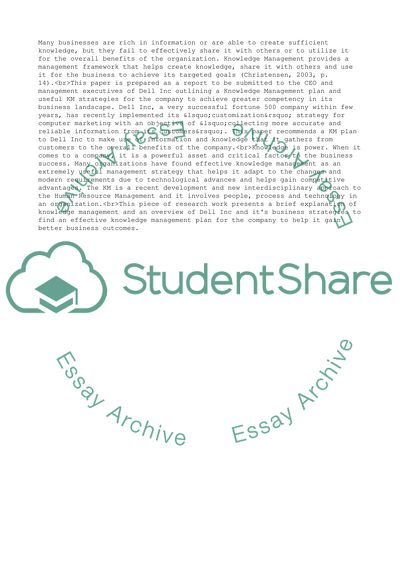Cite this document
(“Knowledge Management Plan for Dell Inc Case Study”, n.d.)
Knowledge Management Plan for Dell Inc Case Study. Retrieved from https://studentshare.org/business/1745562-knowledge-management-plan
Knowledge Management Plan for Dell Inc Case Study. Retrieved from https://studentshare.org/business/1745562-knowledge-management-plan
(Knowledge Management Plan for Dell Inc Case Study)
Knowledge Management Plan for Dell Inc Case Study. https://studentshare.org/business/1745562-knowledge-management-plan.
Knowledge Management Plan for Dell Inc Case Study. https://studentshare.org/business/1745562-knowledge-management-plan.
“Knowledge Management Plan for Dell Inc Case Study”, n.d. https://studentshare.org/business/1745562-knowledge-management-plan.


